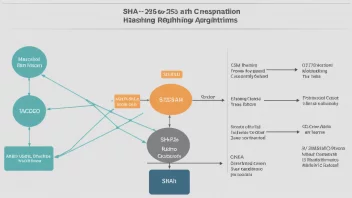In the rapidly evolving world of technology, digital forensics has become an indispensable field that aids in the investigation of cybercrimes and security breaches. Among the various aspects of digital forensics, the examination of firmware plays a crucial role in understanding the behavior of devices and uncovering hidden information. This article delves into the intricacies of firmware examination in digital forensics, exploring methodologies, tools, and case studies that highlight its importance in modern investigations.
Understanding Firmware
Firmware is a specialized type of software that provides low-level control for a device's specific hardware. It is embedded directly into the hardware, enabling it to operate effectively. Unlike traditional software that can be easily updated or modified, firmware usually requires specific tools for updates or alterations. This characteristic makes firmware a critical component in digital forensics, as it often contains valuable data that can provide insights into the device's functionalities and any potential malfunctions or security breaches.
The Role of Firmware in Digital Devices
Firmware is present in a wide array of digital devices, including smartphones, routers, printers, and even automotive systems. Its primary functions include:
- Controlling hardware operations
- Initializing hardware components during boot-up
- Providing an interface between the hardware and higher-level software
- Enabling updates and patches to improve functionality or security
Given its integral role, any investigation involving digital devices must consider the firmware as a potential source of evidence.
Importance of Firmware Examination in Digital Forensics
The examination of firmware in digital forensics is essential for several reasons:
- Data Recovery: Firmware can contain residual data that may not be accessible through conventional means. For instance, deleted files or logs might still be retrievable from firmware memory.
- Malware Analysis: Understanding how firmware operates can help forensic investigators identify malicious modifications or malware embedded within the firmware itself. This is particularly relevant in cases of advanced persistent threats (APTs).
- Device Behavior Analysis: Analyzing firmware can reveal how a device interacts with networks and other devices, which may provide insights into security vulnerabilities or the presence of unauthorized access.
- Chain of Custody: Collecting firmware evidence ensures a clear chain of custody, which is crucial for maintaining the integrity of the investigation.
Methodologies for Examining Firmware
The process of examining firmware involves several key steps:
1. Acquisition
The first step is to acquire the firmware from the device. This can be done through various methods, including:
- Direct Extraction: Using specialized hardware tools to read the firmware directly from the device's memory chip.
- Over-the-Air Updates: If the device allows for firmware updates, investigators may capture the update packets transmitted over the network.
- Backup Images: Some devices allow users to create backup images that can be analyzed for firmware content.
2. Analysis
Once the firmware is acquired, it undergoes a thorough analysis, which may include:
- Static Analysis: Examining the firmware code without executing it. This may involve reverse engineering techniques to understand the code structure and functionality.
- Dynamic Analysis: Running the firmware in a controlled environment to observe its behavior and interactions with hardware and software.
- Network Analysis: Monitoring the device's network traffic to identify any unusual connections or data transmissions.
3. Reporting
After analysis, forensic investigators compile their findings into a comprehensive report that outlines the methods used, evidence found, and potential implications for the investigation.
Tools for Firmware Examination
Several tools are specifically designed for analyzing firmware, facilitating various aspects of the examination process:
- Binwalk: A tool for analyzing binary files and extracting embedded files and executable code from firmware images.
- Firmware Mod Kit: A toolkit for modifying firmware images, useful for dynamic analysis and extracting components.
- Ghidra: A powerful reverse engineering tool that supports analyzing executable files and firmware.
- Radare2: An open-source framework for analyzing binaries and reverse engineering applications, suitable for firmware analysis.
Case Studies in Firmware Examination
Case studies provide real-world examples of how firmware examination has been instrumental in digital forensics:
Case Study 1: The IoT Device Breach
In a notable case involving an IoT device manufacturer, investigators discovered that the firmware had been compromised, allowing unauthorized access to user data. Through firmware analysis, forensic experts identified the specific vulnerabilities exploited by attackers, leading to enhanced security measures in future firmware releases.
Case Study 2: The Malware Attack on Routers
A major router manufacturer experienced a malware attack that went undetected for months. By examining the firmware of the affected routers, forensic analysts were able to identify the malware's signature and its method of communication with command-and-control servers. This analysis assisted in the remediation of the vulnerabilities and helped improve the overall security of the firmware.
Challenges in Firmware Examination
Despite the significance of firmware examination, there are several challenges that forensic investigators face:
- Proprietary Formats: Many firmware images are stored in proprietary formats, making them difficult to analyze without specific knowledge of the device's architecture.
- Encryption: Some firmware may be encrypted, requiring decryption keys or additional methods to access the content.
- Limited Documentation: Manufacturers often provide little documentation regarding their firmware, complicating the analysis process.
The Future of Firmware Examination in Digital Forensics
As technology continues to advance, the role of firmware in digital forensics is likely to expand. Emerging trends such as the increasing prevalence of IoT devices and the growing threat of cyberattacks emphasize the need for robust firmware examination methodologies. Innovations in machine learning and artificial intelligence could also enhance analysis techniques, making it easier to detect anomalies and threats within firmware.
Furthermore, the establishment of industry standards for firmware security and examination practices could provide a more structured approach to investigating firmware-related incidents.
Conclusion
In conclusion, the examination of firmware is a vital component of digital forensics that enables investigators to uncover critical evidence in cybercrime cases. By understanding the methodologies, tools, and challenges associated with firmware analysis, professionals can enhance their investigative capabilities and better protect against future threats. As technology evolves, the importance of firmware examination will only grow, making it a key area of focus for digital forensic experts.






